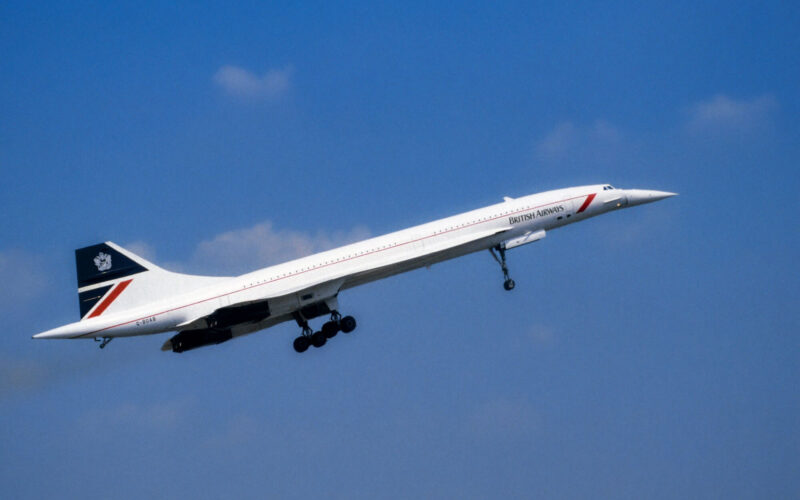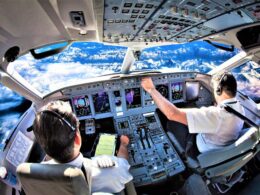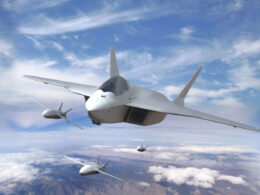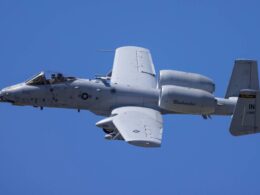Being able to fly on Concorde, the world’s first supersonic passenger jet, was a dream of many. The aircraft could cross the Atlantic in 3.5 hours, arriving in New York before it had taken off thanks to the time difference and making a day trip to New York a possibility.
The aircraft, famous for the boom it made as it broke the sound barrier, could fly at speeds of Mach 2, twice the speed of sound. Its maiden flight was in 1969 and it entered commercial service in 1976. Despite initial hopes for hundreds of orders, just 20 of the jets with their distinctive delta wings were ever produced and only 14 entered commercial service, with Air France and British Airways.
While a technological marvel, the jet was simply too expensive to operate at a profit. The tragic crash upon take-off on July 25, 2000, of Air France Flight 4590 from Paris Charles de Gaulle, killing all 109 people onboard and four on the ground, also severely damaged the aircraft’s perception.
Concorde, which seated 40 passengers in the front of the cabin and 60 in the rear, made its last flight on November 26, 2003. Still, the sleek aircraft remains an enduring symbol of the jet age.
But what was it like to work on the famous Franco-British aircraft? The crew consisted of nine people – two pilots, one flight engineer and six flight attendants. For International Flight Attendant Day, celebrated on May 31 each year, AeroTime speaks to former British Airways cabin crew Lynn Hood, who worked on Concorde for five years, from 1993 to 1998.
First-time flyers
“It was just special, totally special,” Lynn says of her time on Concorde. “I feel very privileged that I was one of the few.”
Lynn had been working with British Airways for around five years when the chance arose to apply for a Concorde role alongside the usual European short-haul trips. She decided not to apply that time, but two years later, she jumped at the chance and was chosen to work on Concorde.
“I was ecstatic to think that I’d been selected because at the time only around 200 people actually worked on Concorde,” Lynn tells AeroTime.
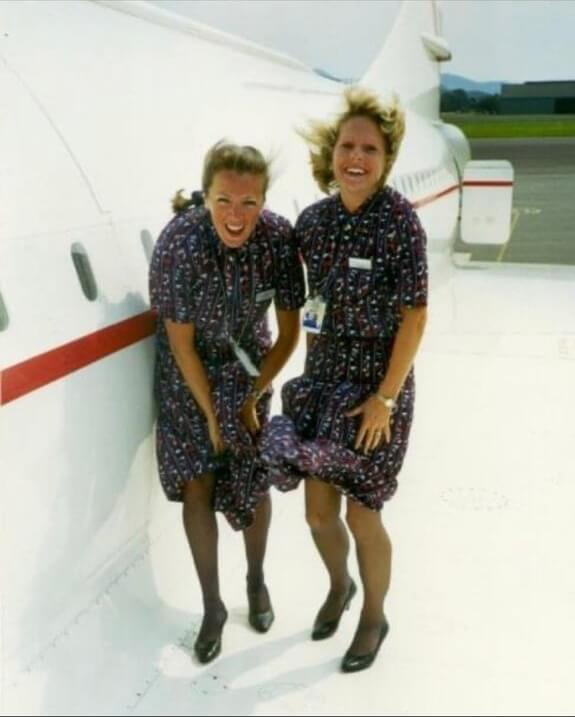
Lynn Hood and a colleague on the wing of Concorde. Credit: Lynn Hood
Lynn says some of her favorite flights were the ‘Around the Bay’ charters, shorter “experience flights” that offered a chance to sample supersonic flight without the supersonic price tag.
“They would have a cold tray of food with champagne, every single passenger went into the flight deck, and they all got their certificates to show that they’d flown on Concorde. You would talk to these people, hear their stories and by the time we got off the plane your cheeks hurt from smiling so much,” she recounts.
For some people, such flights were their first experience of flying altogether. “One time, it was a grandmother’s 80th. She had never ever flown in her life and all the family had clubbed together because they wanted her to have a wonderful experience,” Lynn says. “It was delightful.”
Lynn’s own first flight on Concorde was certainly nothing short of glamorous.
“My first ever trip on Concorde was to go to Barbados for the weekend,” Lynn says. “When I came back, I spoke to friends and they said ‘Well, what did you do at the weekend?’ I answered ‘Oh, I just had to go to Barbados’. It was sort of surreal.”
Transatlantic trippers
More common were the trips to New York. Within the working pattern of six days on, three days off, these could be combined with short-haul flights to Europe.
“I flew Concorde, and then the following day I might have a trip to Berlin or a Manchester shuttle.” One time, Lynn even managed three return trips to New York in the space of a week.
“We were very fortunate. We stayed in the center of Manhattan, could go out shopping and for lunch. Then you would get up the following morning, take the flight back to London, and go home and be in your own bed.”
Alongside celebrities such as Jon Bon Jovi, Prince or Mick Jagger, the passengers on the transatlantic flights also used to include wealthy individuals, such as lawyers or bankers, who used Concorde to make it to meetings in New York before flying back on the overnight Boeing 747 service.
“It was quite diverse in terms of the people, and as a flight attendant, you had to pitch the right way for everybody and adapt your style,” Lynn tells AeroTime. “You accommodated the people that wanted the photographs taken. You accommodated the person who wanted a bottle of water and to get on with their work, because that was their important time.”
In 1997, Lynn was onboard when royal reporter James Whittaker flew back from New York with one of Princess Diana’s dresses that had been sold at auction.
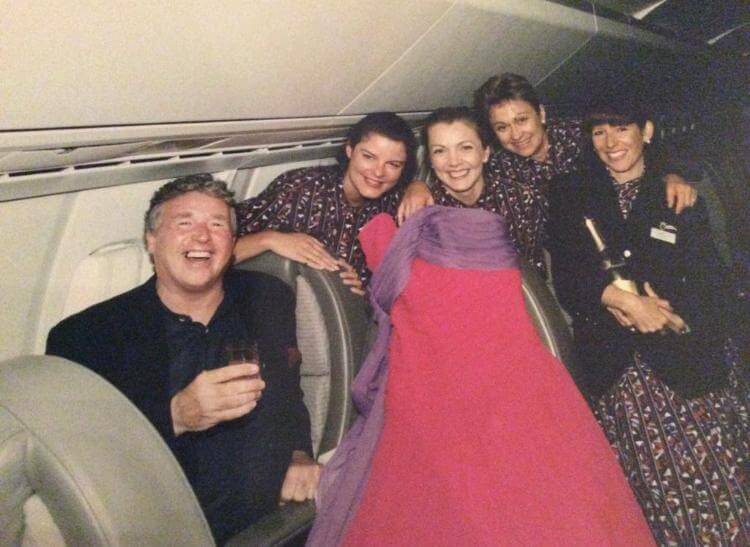
With one of Princess Diana’s dresses onboard Concorde. Credit: Lynn Hood
Space at a premium
It wasn’t all as glamorous as you might think. What Concorde made up for in speed, it sacrificed in space. There was no traveling with the carry-on suitcases, for sure. Anything bigger than a suitcase was stowed in a wardrobe by Lynn and her colleagues.
“Space was at a premium, we had to get rid of so much stuff,” Lynn explains, describing how all the plastic had to be removed from the food before take-off because they had nowhere to put it during the flight.
People’s coats would be collected before they boarded and stored carefully in a wardrobe, so they could be handed back in the right sequence before landing.
Lynn was also lucky enough to be crew on part of an around-the-world-trip, a once-in-a-lifetime vacation that back then cost as much as buying a house. She remembers how they had to tell people not to buy too many souvenirs because of the space and weight limitations of Concorde.
“And obviously if any bags needed to be offloaded, it would be the crew bags,” says Lynn with a smile. “You would encourage the passengers doing around the world to send things home.”
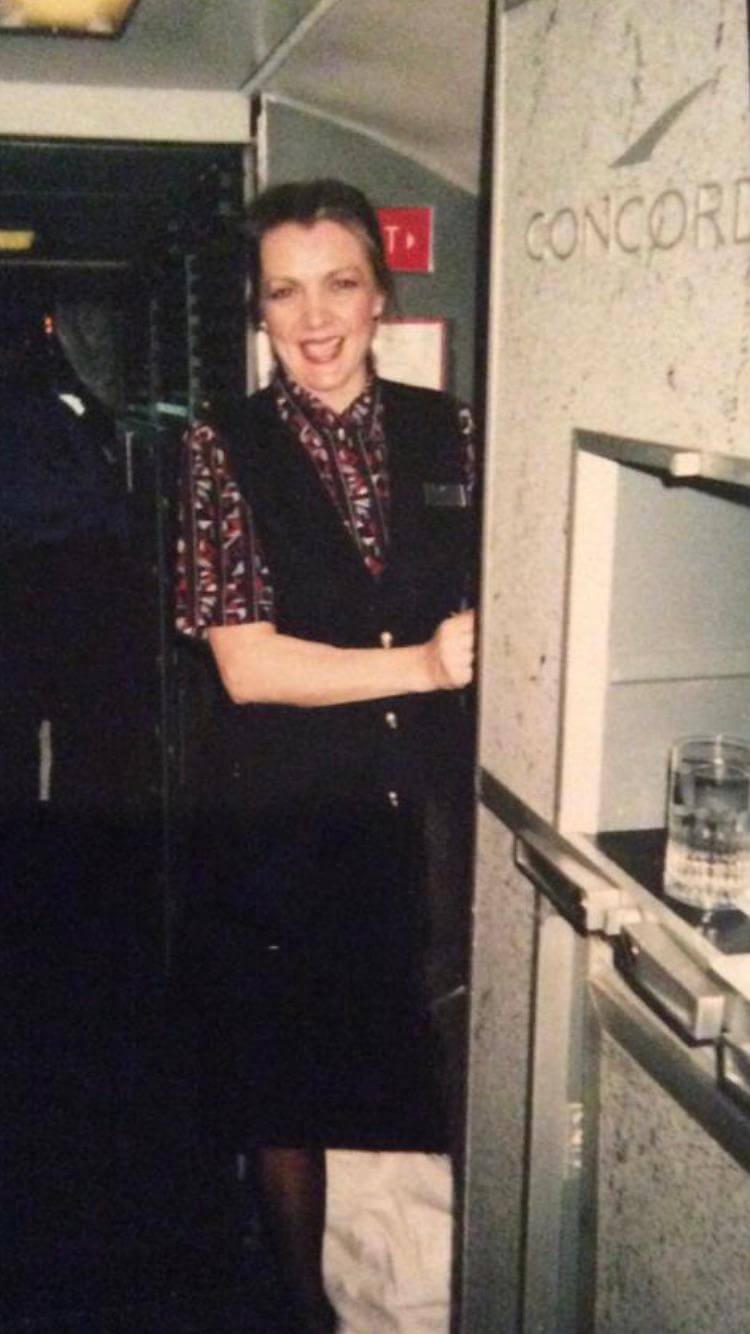
Lynn Hood in the galley of Concorde. Credit: Lynn Hood
Mach 2
It could be easy to forget that Concorde was traveling supersonic during cruise. Take-off was a different matter though.
“When you took off, it was ‘Wow’,” Lynn says.
For cabin crew, one aspect of working Concorde was very noticeable, Lynn remembers. The nose high attitude during flight meant the crew were working on an incline.
The boom created by breaking the sound barrier means Concorde was not allowed to go supersonic over land. Objections to the noise are one of the main stumbling blocks for those working to bring back supersonic travel, such as NASA and Boom Supersonic.
Lynn is skeptical as to whether supersonic passenger travel will return. “I can’t see a passenger aircraft of 100 people, which is what Concorde would take, coming back into existence because I can’t see it being a moneymaker.”
The world has also changed dramatically since the Concorde era, she highlights. “The world is a very different place and we’re very conscious of the environment and our footprint on the world.”
The emergence of video calling during the pandemic also reduces the need for those one-day trips to New York for meetings.
“When you do see someone face to face, it’s very different to seeing them on a screen. But a lot of businesses don’t necessarily need someone to fly to New York for the day and back. It’s a changed world. And we have got to change with it as well.”
Lynn probably has enough stories of Concorde flights to fill an entire book. But for now, she is busy renovating a 300-year old stone farmhouse in Abruzzo in Italy with her partner Steve and dog Button.
“Wonderful, happy memories,” Lynn sums up. “Happy memories of people, crew, flights, and destinations around the world.”
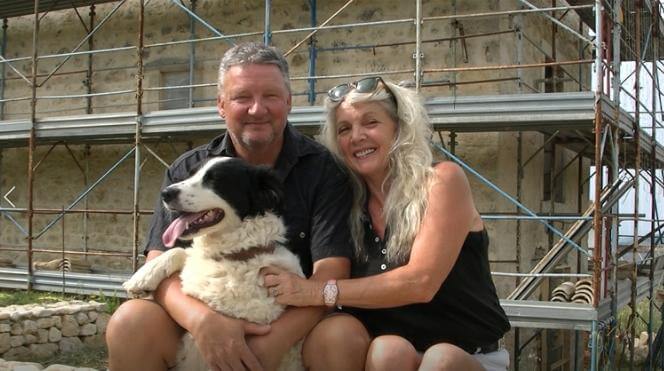
Lynn Hood, her partner Steve and Button the dog at their farmhouse in Italy. Credit: Lynn Hood

